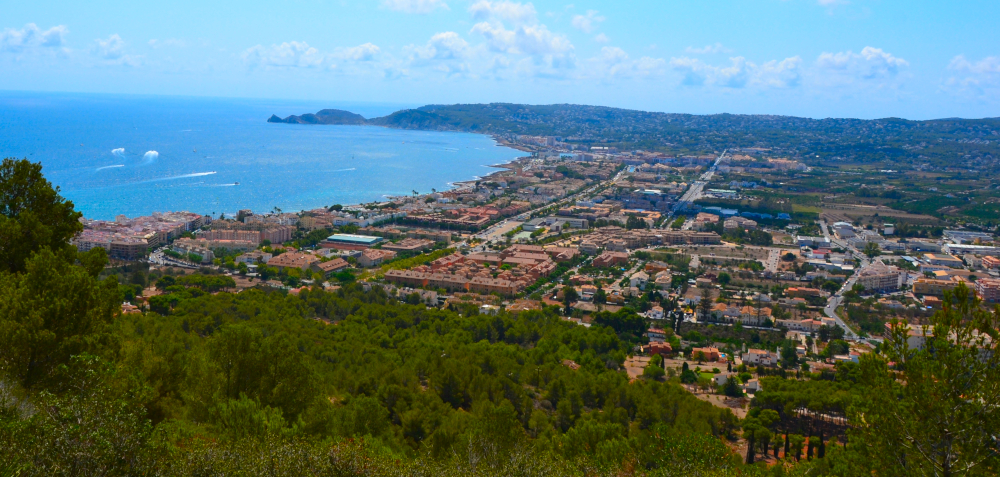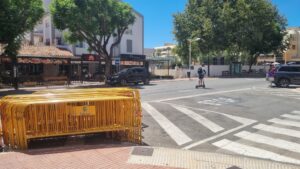Council presents draft Municipal Acoustic Plan to deal with noise
The document highlights areas with noise issues and how to deal with them.

Tuesday 19th January 2021 | MIKE SMITH
Subject to agreement, Xàbia Council will be opening up the Municipal Acoustic Plan (PAM) for public consultation, a strategic document that assesses the level of noise pollution in the town, dividing the municipality into acoustic areas based on use and territory.
The PAM, which has been presented to all political parties in the town in an information commission, has to pass through this public consultation period so that opinions and statements can be presented and considered. Once concluded, the plan will form part of the documentation included in the municipal bye-laws against noise pollution.
In general, measurements that had been carried out as part of the study into noise pollution in Xàbia show that the source of noise which is most problematic is road traffic, especially during the high season periods, and the movement derived from tourism and leisure. However, the study has pointed out that the issue “is much lower than that of similar cities, even in high season”. In fact, the percentage of affected residents ranged from 0.6% (during low season and daytime hours) to 1.4% (during the high season and night hours).
The analysis has specified six main areas for road traffic noise: Carretera Cabo de la Nao-Pla; Avenida de Palmela; the link road Cabo de la Nao-Pla / Calle Milán; the link Carrer de Jorge Luis Borges / Avenida del Pla; the access road to Xàbia from Avenida de Gata; and the access to Xàbia from Jesús Pobre. The study proposes measures that range from reducing the maximum speed to the installation of speed-reducing infrastructure or interactive signs, the pedestrianization of streets, promoting the use of bicycles, and replacing rubbish collection and street cleaning vehicles with gas-operated trucks which are quieter.
The greatest annoyance about noise at night (1.91%) comes from leisure, especially in the high season, and concentrated in the main leisure areas (previously studied and identified) in the historic centre and port areas as well as the Punta de l’Arenal where several venues are concentrated.
The proposed measures to combat this type of noise pollution includes the mandatory installation of noise limiters for discos, nightclubs, pubs and bars with sound reproduction equipment. In addition, it calls on greater control of the isolation system or the imposition of schedules for different activities (which may be differentiated into holiday periods and ordinary periods) so that premises with open areas or terraces must close all their external enclosures.
Acoustically Saturated Zone (ZAS)
The study specifies the case of the Punta de l’Arenal where there have been numerous complaints from unhappy residents due to the high level of noise pollution due to the concentration of leisure venues and it has been requested that this area be declared an ‘Acoustically Saturated Zone’ (ZAS).
The study clarified that this legal instrument cannot be used arbitrarily, but rather it has a perfectly regulated procedure for its declaration. In particular, it must be demonstrated that the established evaluation levels for noise in the outside environment in the area have been exceeded at least twice a week for three consecutive weeks, or three alternate weeks within a period of 35 days, by more than 20 dB.
The company charged with studying the noise level found that, during the summer of 2020, it was able to verify through the sample acoustic measurements and field visits “that the requirements for its declaration have not been met”. However, it added that the situation may not have been representative, given the conditions derived from the crisis caused by the COVID-19 pandemic, so it has been advised that the study be repeated when a state of normality returns.
For this analysis, continuous measurements have to be taken for at least one month (between June and August) in two locations near residential areas which will determine the acoustic environment of the area and verify any excesses in noise levels that would be required for the declaration of an ZAS.
Based on the results of the preliminary study, and in the event that noise exceeds the evaluation levels, the Council will begin the process of declaring an ZAS, in which case it may begin the precautionary actions it deems necessary.



